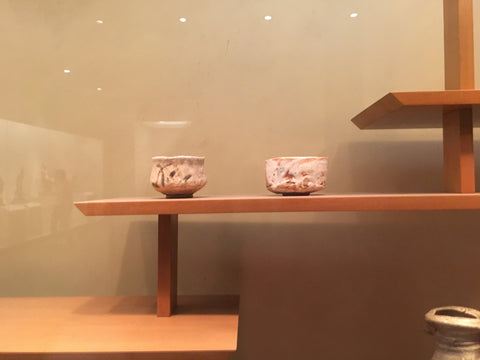Tea Thoughts » green tea
-
10- Tea fun Facts :)

Hello, Tea lovers!
Here are some fun tea facts for you to drink more tea!
1. When making a pot of tea pour hot water into the teapot to warm it before you make your tea : ).
2. The art of reading tea leaves is called Tasseography.
3. Milk used to be poured into a cup before the tea, to protect the delicate china (not necessary).
4. Black tea is made from leaves that are fermented and then heated, to remove the moisture, and the heat turns the leaves black.
5. Earl Grey tea was named after a 19th-century British diplomat in China.
6.Herbal Teas are not actually teas because they don't contain leaves from the plant Camellia Sinensis. Instead, they are infusions made from the roots, leaves, flowers, seeds and fruits.
7. Tea Strainers or infusers baskets allows tea leaves room to expand, producing a better quality tea.
8. loose tea remains good for about 2 years, provided you keep it away from light and moisture.
9. Tea bags are good for about six months before they lose their quality or flavour.
10. Matcha (The popular tea beverage) is a powdered green tea, used in Japanese ceremonies.
Hope you like them :)
If you have any more facts, feel free to share them--->
-
Tea and Art
Happy Labor day to you all!
During this long weekend, I paid a visit to the windy City, just to find out that inspiration comes when you least expect it.
I was at The Chicago Arts Institute and in one of the first wings I entered I found an exhibition called "The Practice of Tea from the Edo Period to Today" this room featured classical oriental teaware, the description, I thought, would be interesting to share with you:
"Wares used for the serving of tea or a light meal, such as water containers, kettles, dishes, drinking bowls, caddies to hold the powdered tea, and other utensils, were avidly acquired and highly prized. Equally admired as part of the ritual were purely decorative elements such as prized calligraphy samples or ink paintings that were often hung in the tokonoma (alcove). In Edo period Japan (1615–1868), the tea ceremony provided a forum for appreciating and collecting these works of art. Items displayed and used included objects from China, Japan, Korea, and, beginning in the 17th century, the West. Some of these wares, passed among aficionados as gifts or bought for high prices, took on such fame that they were referred to by nicknames. In time, three different styles of tea service emerged. The formal manner was developed by the Ashikaga shoguns (1336–1573) and included items imported from China. Semiformal wares featured refined Japanese items or those imported from Korea. Asymmetrical or flawed objects, often with imprecise decoration, are the hallmarks of the informal mode."

Another thing that was clear in the description is that tea was used as a ritual where people gather to put the concerns of their daily life a side, these ornamental pieces were made with such detail that its form is considered a form of art but lately the world doesn't attribute the necessary attention to the tea ware, serving it in coffee mugs or to go cups and without the proper utensils. That is why tea and Company make it easier for you, giving you the full experience and giving back the importance of tea ware.
Share your thoughts on this post, or if you want to know more about tea ware.
Hope you had a lovely weekend.
Yours,






